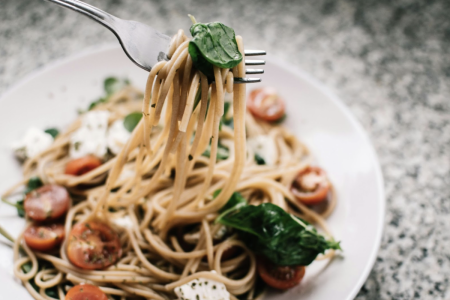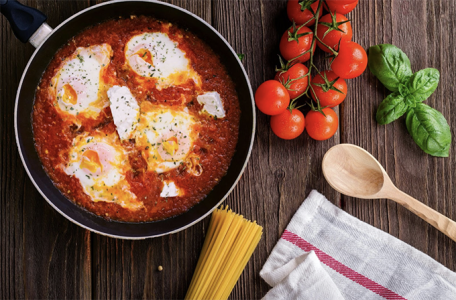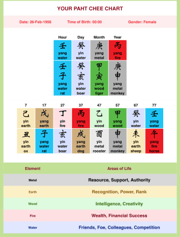We've Been Eating Pasta All Wrong: A Dietitian Reveals the Surprising Truth That Could Transform Your Health
- Replies 12
Many of us enjoy pasta because of how versatile, delicious, and cheap it is.
However, it's also been blamed for weight gain and unhealthy eating habits, especially among those who are dieting. But before you throw out your spaghetti, a renowned dietician has offered some pasta-eating tips.
The common misconception that pasta is inherently unhealthy has been debunked by dietitian Shyla Cadogan, who argues that it's not the pasta itself that's the issue but how it's consumed.
In a piece she penned for StudyFinds, Cadogan emphasised the importance of portion control, recommending a serving size of 56.7g of uncooked pasta, which translates to roughly 1 cup of cooked pasta.
This portion contains about 200 calories, 40 grams of carbohydrates, 6 grams of protein, and 1 to 2 grams of fibre, as per the guidelines from Barilla, the world's largest pasta producer. Of course, this will vary between brands.
Although despised in diets, carbohydrates are the body's primary energy source. Wholegrain pasta has more fibre and protein, which can help you feel full and avoid overeating.
However, the nutritional aspects get unclear depending on the pasta's preparation, as The New York Post reported.
Adding rich sauces, butter, creams, meats, and cheeses can significantly increase the calorie content and diminish the dish's nutritional balance.
Moreover, many people exceed the recommended serving size. Cadogan points out that virtually any food can become unhealthy when eaten in excess or as part of an unbalanced diet.
The key is to balance your plate with a variety of foods.
To create a healthier pasta dish, Cadogan suggests incorporating a Napolitana-based sauce with vegetables for added fibre and including a source of protein.
With the rise of health-conscious eating, numerous high-fibre and higher-protein pasta alternatives are now available, such as those made from chickpeas, edamame, black beans, and other legumes.
Dispelling the myth that pasta must be excluded from weight loss diets, Cadogan reminds us that pasta can be part of a healthy diet when consumed mindfully.
It's not just about the nutrients—pasta also has the power to make us happy.
Pasta may have an even greater effect on mood than your favorite tunes or a sporting event, according to research out of Italy's Free University of Languages and Communication IULM's Behavioral and Brain Lab.
The research involved participants eating pasta while their physical and neurological changes were analysed, showing that pasta elicited positive emotions and activated cognitive memory processes.
It supports the idea that pasta is not only a comfort food but also a 'food of happiness’, offering a high happiness-to-price ratio, as Riccardo Felicetti, president of the Italian pasta makers of Unione Italiana Food, put it.
So, how can you transform your pasta-eating habits for better health?
Here are some tips:
1. Measure your portions: Stick to the recommended serving size to avoid overeating.
2. Choose wholegrain: Opt for wholegrain pasta varieties for extra fibre and protein.
3. Balance your plate: Pair pasta with vegetables and a lean protein source for a well-rounded meal.
4. Be sauce-savvy: Go for tomato-based sauces over creamy ones, and watch the amount you use.
5. Explore alternatives: Try pasta made from legumes for a higher protein and fibre content.
6. Enjoy mindfully: Savor your pasta, enjoy the experience, and listen to your body's fullness cues.
By rethinking how we eat pasta, we can enjoy this beloved food without guilt and with all its benefits. So, next time you're boiling spaghetti or twirling fettuccine on your fork, remember that pasta can be part of a healthy, balanced, and joyful diet.

Members, what are some of your favourite pasta dishes to cook or to eat? Share them down below.
However, it's also been blamed for weight gain and unhealthy eating habits, especially among those who are dieting. But before you throw out your spaghetti, a renowned dietician has offered some pasta-eating tips.
The common misconception that pasta is inherently unhealthy has been debunked by dietitian Shyla Cadogan, who argues that it's not the pasta itself that's the issue but how it's consumed.
In a piece she penned for StudyFinds, Cadogan emphasised the importance of portion control, recommending a serving size of 56.7g of uncooked pasta, which translates to roughly 1 cup of cooked pasta.
This portion contains about 200 calories, 40 grams of carbohydrates, 6 grams of protein, and 1 to 2 grams of fibre, as per the guidelines from Barilla, the world's largest pasta producer. Of course, this will vary between brands.
Although despised in diets, carbohydrates are the body's primary energy source. Wholegrain pasta has more fibre and protein, which can help you feel full and avoid overeating.
However, the nutritional aspects get unclear depending on the pasta's preparation, as The New York Post reported.
Adding rich sauces, butter, creams, meats, and cheeses can significantly increase the calorie content and diminish the dish's nutritional balance.
Moreover, many people exceed the recommended serving size. Cadogan points out that virtually any food can become unhealthy when eaten in excess or as part of an unbalanced diet.
The key is to balance your plate with a variety of foods.
To create a healthier pasta dish, Cadogan suggests incorporating a Napolitana-based sauce with vegetables for added fibre and including a source of protein.
With the rise of health-conscious eating, numerous high-fibre and higher-protein pasta alternatives are now available, such as those made from chickpeas, edamame, black beans, and other legumes.
Dispelling the myth that pasta must be excluded from weight loss diets, Cadogan reminds us that pasta can be part of a healthy diet when consumed mindfully.
It's not just about the nutrients—pasta also has the power to make us happy.
Pasta may have an even greater effect on mood than your favorite tunes or a sporting event, according to research out of Italy's Free University of Languages and Communication IULM's Behavioral and Brain Lab.
The research involved participants eating pasta while their physical and neurological changes were analysed, showing that pasta elicited positive emotions and activated cognitive memory processes.
It supports the idea that pasta is not only a comfort food but also a 'food of happiness’, offering a high happiness-to-price ratio, as Riccardo Felicetti, president of the Italian pasta makers of Unione Italiana Food, put it.
So, how can you transform your pasta-eating habits for better health?
Here are some tips:
1. Measure your portions: Stick to the recommended serving size to avoid overeating.
2. Choose wholegrain: Opt for wholegrain pasta varieties for extra fibre and protein.
3. Balance your plate: Pair pasta with vegetables and a lean protein source for a well-rounded meal.
4. Be sauce-savvy: Go for tomato-based sauces over creamy ones, and watch the amount you use.
5. Explore alternatives: Try pasta made from legumes for a higher protein and fibre content.
6. Enjoy mindfully: Savor your pasta, enjoy the experience, and listen to your body's fullness cues.
By rethinking how we eat pasta, we can enjoy this beloved food without guilt and with all its benefits. So, next time you're boiling spaghetti or twirling fettuccine on your fork, remember that pasta can be part of a healthy, balanced, and joyful diet.
Key Takeaways
- Pasta itself is not inherently unhealthy; how it is often eaten can be problematic.
- The recommended serving size for pasta is approximately 1 cup of cooked pasta.
- Adding high-calorie sauces and sides to pasta dishes can cause the meal to become unbalanced nutritionally.
- Wholegrain and alternative pasta options offer more fibre and protein; incorporating them into a balanced diet can contribute to health and even improve mood.
Members, what are some of your favourite pasta dishes to cook or to eat? Share them down below.









